Brain retraining and nervous system programs are very popular in the chronic fatigue recovery community. There are many programs to choose from and it can be quite overwhelming to know where to spend your money and which program is right for you.
Many people who experience chronic “syndromal” illness often experience lack of support from their physicians at best and are medically gaslighted at worst. They are often left to their own devices to find solutions, which, when unguided, can lead to a lot of trial, error, frustration over lack of progress and setbacks, all of which re-enforces self doubt and fear of failure.
The natural question anyone may ask when considering a brain retraining program is; is this just another thing I will waste time, energy and money on that will not work (for me)?
The purpose of this blog today is to break all of this down to facilitate a greater understanding so that you can make an informed choice about how you choose to support yourself in fatigue recovery.
Big Picture
Before we look at brain retraining specifically, let’s look at why some interventions work better for some people than others. These are mistakes that I have personally made and trends I observe in clients and people who enquire about working with me.
I like to think of fatigue recovery like a puzzle. If you have built a puzzle before you probably started by building the border or the edges of the puzzle and then you worked on one section of the inner puzzle at a time. If you became frustrated with one section you probably took a break and then started working on a different section for a bit. Eventually the sections begin to connect and eventually you have completed the puzzle!
The reason why we build the puzzle border first is because it creates a sense of orientation. We know where we are in space and we have a structure and foundation on which we can build.
Many people start their recovery journey from a place of overwhelm and chaos. Having your life fall apart is inherenlty stressful. Having to pick up the pieces from a place of distress when no one understands you or really knows how to help you is 10x more stressful – therefore, structure and stability is everything.
Therefore, one of the biggest mistakes I see people make in their fatigue recovery is doing the right things at the wrong time. Essentially, trying to work on the inside of the puzzle before they have created a stable foundation. This can look like:
- Taking the right supplements at the wrong time or just taking the wrong supplements or the ones that aren’t bad per se, just not top priority
- Spending money on the right testing at the wrong time
- Supporting the right systems, but out of order (eg. supporting mitochondria when there is still a big threat to the immune system e.g. toxins or infections or addressing other hormones before blood sugar is regulated etc.).
- Doing all the right things in the right order, but failing to support the nervous system when required
Finally, we also have to acknowledge that each person is different. They may have different genetic predispositions, different experiences which have shaped their nervous system and physiology, they may have different coping mechanisms, different attachment styles, different nutrient deficiencies, a different microbiome, a different toxic load, different infections, different belief systems and also just different day to day pressures and responsibilities that are currently impacting their capacity day to day.
Therefore, we cannot expect the same interventions to work for two different people. We also cannot expect everyone to get the same results in the same time frame. This is where personalised medicine (which is what I offer my clients in my 1:1 Fatigue Recovery Package and Fatigue Recovery Road Map) can help the individual know what they need to do for their specific case. Including;
- Identify the root cause
- Prioritise interventions and build foundations
- Guide testing decisions
- Understand which supplements to prioritise at what time
Brain Retraining and Nervous System Programs
Brain retraining and nervous system program can be supportive to:
- Help the body move to a relative sense of safety after an infection or threat (eg. get out of the cell danger response)
- Help the body get out of stuck survival states (fight, flight and freeze) and help the body move more easily between activation states – in doing so, more energy is available for recovery and repair and their is less depletion from maintaining constant activation
- Expand the window of tolerance so that the body has a greater capacity to handle stress with less long term disturbance to physiology
- Help the body and mind to retrain unhelpful patterns and coping mechanisms that have become blended with the experience of the illness
These are definitely all useful and important for anyone experiencing a chronic illness or fatigue condition such as CFS/ME, Fibromyalgia, Long Covid, PoTS etc.
But why do some people thrive more than others in brain retraining programs?
My Brain Retraining Experience
In my own fatigue recovery I came across DNRS by Annie Hopper after listening to her speak on several Functional Medicine Podcasts. I read her book “Wired to Heal” and eventually decided that I had nothing to lose and I jumped into her 3 day program.
At the time I was experiencing:
- Fatigue
- Headaches
- Post-Exertional Malaise
- Chronic Diarrhoea (sometimes up to 10x bowel movements per day for 2 years!)
- Anxiety around low energy
- Excessive self protection against “expending too much energy” leading to social withdrawal and resting probably more than I actually needed to
I fully committed to the program and did the 3 day online training across a weekend. I followed her practice religiously for 3 months which meant practising 1 hour per day. At the time I was also learning somatic experiencing so I added a bit of my own flare to the practise too.
The biggest shifts for me were:
- No more chronic diarrhoea; for the first time in two years my digestion has stabilised. I had also been taking gut support supplements at the same time. I had tried many supplement protocols that had failed so this could have been the combination with the DNRS or just the DNRS, I will never know.
- Change in attitude around excess rest, crashes and set-backs and increased confidence to push myself a little more physically.
- Maybe a little more energy but no major shifts.
No Significant Change:
- Fatigue (overall)
- Post-Exertional Malaise
The change in digestion was a BIG win for me and it definitely made doing the program worthwhile. I have no regrets. Annie recommends you give it at least 6 months and I gave it only 3. Why did I not persevere?
I started in April and after 3 months it was June. The weather was getting better and it was lighter and warmer. I decided it was much more honouring for my nervous system to actually get outside into nature, swim in the sea and spend my time “living” the things that make me feel joyful than staying indoors and reprogramming my body and mind for joy.
What I didn’t know I didn’t know (blindspots)
What I didn’t know at the time was that I had mold illness – this was only discovered later. Therefore, although the brain retraining gave me a big leg up in my recovery, it wasn’t a magic bullet. I don’t believe in magic bullets.
I believe that often we can perceive something to be a magic bullet but actually, it is just the final piece of the puzzle that fits so nicely on the foundations that we have already spent so much time creating.
When I eventually tested positive for mold mycotoxins and began a detoxification protocol, I finally got traction on some of my other symptoms that the brain retraining had not addressed e.g. fatigue and post-exertional malaise.
Additionally, although the DNRS made a huge difference in my digestion, it still wasn’t perfect. About 6 months later I did an elimination diet of my main trigger foods (high sulphur foods), antimicrobials, a parasite cleanse and then probiotics. The combination of all of the above, plus being less moldy, is what finally got my digestion to the right place – today it works great! It took over a year for it all to balance out.
Why Results Differ
All of the above is probably starting to paint the picture of why results may vary; people arrive at a chronic illness experience for different reasons. A condition such as CFS/ME ultimately results from a long term wear and tear on the system. This wear and tear could be a combination of all or any of the following:
- Big T’s or lots of little t’s
- Chronic Stress
- Infections; parasites, bacteria, virus, yeast, mold, parasites
- Toxins; mycotoxins, heavy metals, endotoxins, environmental toxins
- Nutrient deficiencies
- Blood sugar imbalances
- Poor sleep and circadian rhythms
- Too much or too little exercise
- Lack of support, human connection, connection with nature, the planet and natural ebb and flow of life
Depending on where someone is on their journey a brain retraining or nervous system program may produce different results. Here are some examples:
More of a burnout situation; Someone who is experiencing chronic fatigue due to ongoing stress but no major history of infections, toxin exposure or big trauma’s may likely see greater progress than someone with multiple infections (eg. mold, gut dysbiosis, parasite) and toxin exposures.
Different stages of the journey; people find brain retraining and nervous system programs at different stages of their journey. When someone has been unwell for some time, the body may become habituated to a state of dysfunction. Sometimes, all the body needs is to feel relatively safe to move forward and when it does, healing happens more organically with less effort from the participant. Some people may also have done a lot of the ground work – such as dietary and lifestyle changes, addressing nutrient deficiencies, toxins and infections – and then nervous system work and brain retraining is the final cherry on top that completes the process.
Still an active problem; if someone engages with nervous system work and brain retraining but there is still an active infection or overwhelming toxic load, they may experience improvement, but not a full return to well-being. The nervous system work is still valuable even if it doesn’t offer complete resolution because it allows for more tractions from other healing modalities.
Very often these people are gaslit and told they are not trying hard enough, committed enough, or doing it right. This is a problematic and harmful message because it shames the individual while also discouraging them from looking for blindspots because they are led to believe the problem lies with them.
This category best describes my own experience with DNRS. I experienced some benefits but there was still an active problem that cannot be managed by brain retraining and somatic work alone. Fortunately I didn’t take my lack of full resolution to heart and I continued to look for answers. This is why I suggest that it can be helpful to take my Nurturing Resilience Program alongside the Fatigue Recovery Roadmap.
Sensitive systems; we are all different and different nervous systems have different coping mechanisms and capacities. One of my favourite sayings is; you can only move as fast as the slowest part.
Healing cannot be rushed. Rather it happens in the space between not trying too hard and not giving up. This will be different for different people and in some cases healing happens faster and in other cases, it happens slowly and needs more space and time. Therefore to expect everyone to have the same outcome in the same space of time is completely unrealistic and consumers need to be educated around this to manage expectations.
The dark side of marketing; traditional marketing practices teach us to market from a place of scarcity and fear i.e. I have this secret information that you don’t have and it will solve all your problems and take away your pain.
In reality, most people don’t have special secret information and there isn’t a magic bullet that solves everything. But more often than not we’ll hand pick the best testimonials to create the illusion that this is true.
A more authentic approach would be to showcase all client results, to accurately convey the range of transformation that could be experienced in any given program instead of only validating the best. This helps to more accurately manage consumer expectations but also protects the consumer from feeling like a failure if their results do not match the advertised “best”.
This is something I am working on in my own business but unfortunately its not sexy and dramatic, which is what most people want to see. I also know from experience that, for whatever reason, sometimes the wrong person ends up in the wrong program and it just doesn’t work for a variety of reasons (right place, wrong time, wrong place and wrong time, wrong facilitator for that person, etc.). However, sometimes being in the wrong place at the wrong time can still offer useful information for the future.
Different Containers; I have been asked, what makes my Nurturing Resilience different to other programs? In other words; why pick your program over someone else’s?
My answer: most programs will teach the same core information dressed up in different packaging but the structure and feel may be different. Sometimes what matters more than what you are learning is who you are learning with.
There is something special that happens when the right person delivers the right information in a relatively safe container that allows your nervous system to feel safe enough to receive what is being offered. You are also not a passive recipient but you make the conscious choice that you will do your best to be open to receiving what is offered.
Therefore, what makes NR different is probably me, the container that I create and how I structure my approach and this may be a good thing or a bad thing depending on who you are and what you need.
I value small intimate groups and high touch support. I shape my programs accordingly. But more important than that is the resonance between your nervous system and mine. If you feel that another approach would be better for you, I would trust that. If you feel drawn to working with me, even if you don’t really know why, you may want to follow that thread.
Finally, the inspiration for Nurturing Resilience was born after people reaching out to me on social media with concerns about the dogmatic nature of some programs. These programs were finely walking the line of some of the gaslighting behaviour I have described above by dismissing that active and unresolved threats in the body could be limiting progress and results.
I thought there was space to create something delivered by someone trained across multiple disciplines (Somatic Experiencing, Psychoneuroimmunology, Nutritional Therapy, Functional Medicine, Yin Yoga, Breathwork and Neuro-Linguistic Programming) who could understand the intersectionality of differently healing modalities.
Healing takes a village. There are many ways to heal and each individual needs to find their collection of healers – not just put one healer on a pedestal – as they learn to become their own healer. I see NR as part of a journey, not a complete process.
Where to from here?
If what you have read here today has resonated with you and you are looking to take the next step in your healing, I would love to invite you to consider joining Nurturing Resilience.
It may be appropriate for you if you are a woman with CFS/ME, burnout, fatigue or some other chronic dis-ease where fatigue is one of the debilitating symptoms.
You may be working with a Functional Medicine Practitioner, Naturopath or Nutritional Therapist but you may feel like you’ve;
- Hit a plateau
- Gone backwards or reacting to supplements / interventions
- Or the interventions just aren’t “landing” and giving you traction
And you want to:
- Inject fresh energy into your healing journey and feel like things are moving forward and gaining traction
- Feel good again and start to get more of your life back
- Be able to make plans and commit to things
- Stop googling, reading, researching and second guessing and put your energy and time into a structured process.
You can find the full details including investment, commitments, module content and FAQ here.
You might also like to listen to Episode 9 of the Chronic Fatigue and Burnout Recovery Podcast where I discuss my approach to nervous system support and brain retraining in a bit more detail.


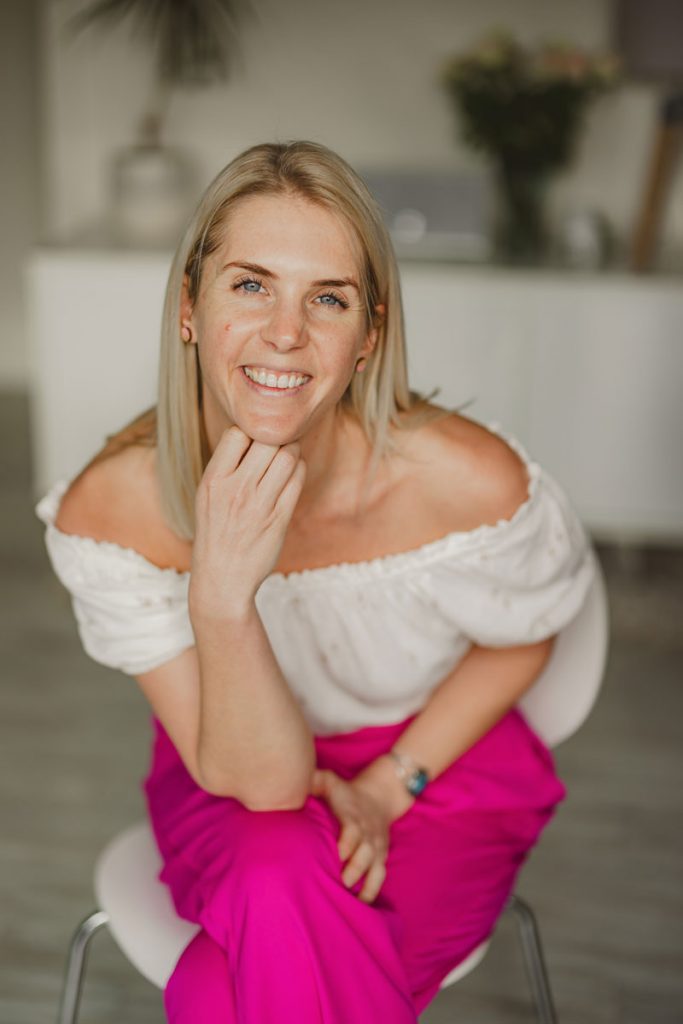
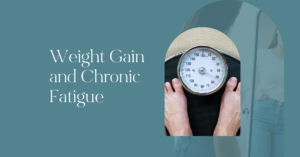
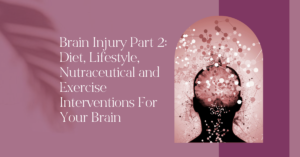
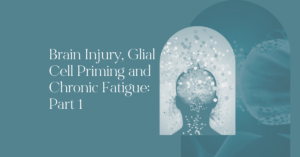


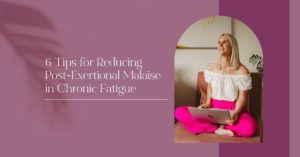




 Healing l
Healing l
